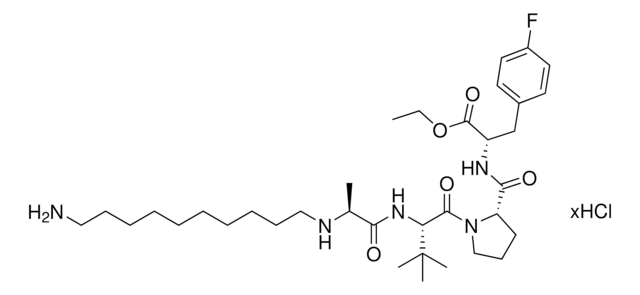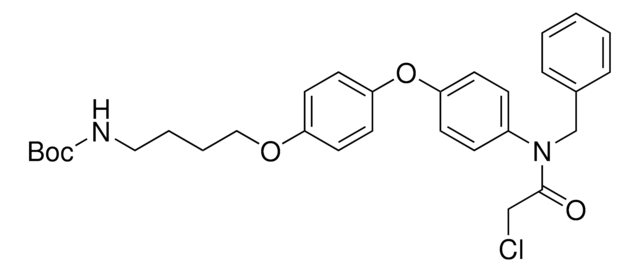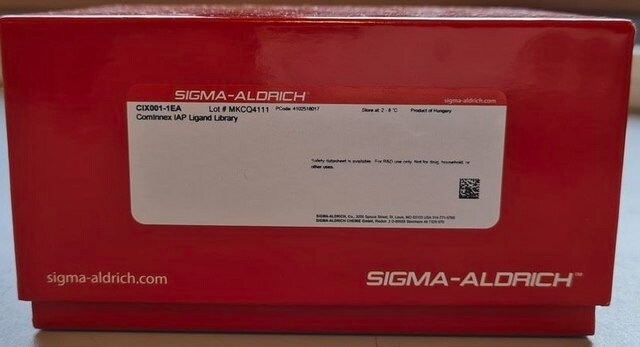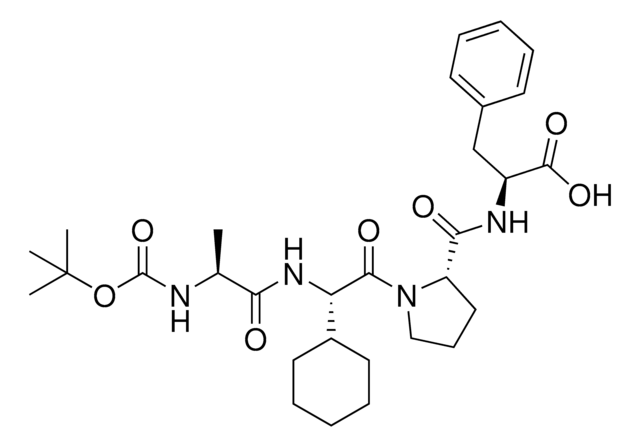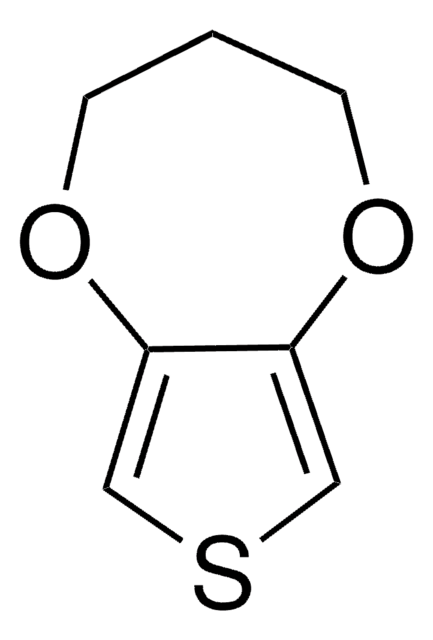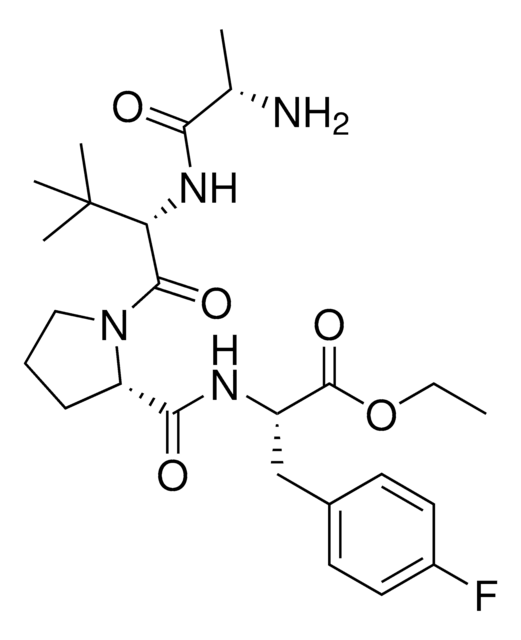917206
A1V2PF1-NHEt-C10-NH2
Sinónimos:
(S)-1-((S)-2-((S)-2-((10-Aminodecyl)amino)propanamido)-2-cyclohexylacetyl)-N-((S)-1-(ethylamino)-1-oxo-3-phenylpropan-2-yl)pyrrolidine-2-carboxamide, AVP conjugate for IAP-mediated protein degrader development, SNIPER building block
About This Item
Productos recomendados
ligand
A1V2PF1
Nivel de calidad
Formulario
crystals
idoneidad de la reacción
reactivity: carboxyl reactive
reagent type: ligand-linker conjugate
grupo funcional
amine
temp. de almacenamiento
2-8°C
cadena SMILES
C[C@H](NCCCCCCCCCCN)C(N[C@H](C(N1CCC[C@H]1C(N[C@H](C(NCC)=O)CC2=CC=C(C=C2)F)=O)=O)C3CCCCC3)=O
Clave InChI
HWOUYPPQDSELDI-MKKRQWMVSA-N
Categorías relacionadas
Aplicación
Building blocks in this series:
917222 A1V2PF1-NHEt
916943 A1V2PF1-NHEt-C6-NH2
917206 A1V2PF1-NHEt-C10-NH2
917451 A1V2PF1-NHEt-PEG1-NH2
917702 A1V2PF1-NHEt-PEG3-NH2
Technology Spotlight: Degrader Building Blocks with Inhibitor of Apoptosis Protein (IAP) In Silico-Derived Ligands
Otras notas
Información legal
Producto relacionado
Código de clase de almacenamiento
11 - Combustible Solids
Clase de riesgo para el agua (WGK)
WGK 3
Punto de inflamabilidad (°F)
Not applicable
Punto de inflamabilidad (°C)
Not applicable
Elija entre una de las versiones más recientes:
Certificados de análisis (COA)
It looks like we've run into a problem, but you can still download Certificates of Analysis from our Documentos section.
Si necesita más asistencia, póngase en contacto con Atención al cliente
¿Ya tiene este producto?
Encuentre la documentación para los productos que ha comprado recientemente en la Biblioteca de documentos.
Artículos
Targeted protein degradation (TPD) is an emerging strategy that uses small molecules to hijack endogenous proteolysis systems to degrade disease-relevant proteins and thus reduce their abundance in cells.
This product is a plate of 80 ligands against the E3 ligase IAP The ligands were designed by ComInnex using a computational approach. Linkers can be added to these ligands allowing attachment to target ligands to create bifunctional targeted protein degraders. The ligands can also be used to discover molecular glues that bring together the IAP E3 ligase and a target.
Protein Degrader Building Blocks are a collection of crosslinker-E3 ligand conjugates with a pendant functional group for covalent linkage to a target ligand.
Global Trade Item Number
| Número de referencia del producto (SKU) | GTIN |
|---|---|
| 917206-50MG | 4061842647446 |
Nuestro equipo de científicos tiene experiencia en todas las áreas de investigación: Ciencias de la vida, Ciencia de los materiales, Síntesis química, Cromatografía, Analítica y muchas otras.
Póngase en contacto con el Servicio técnico